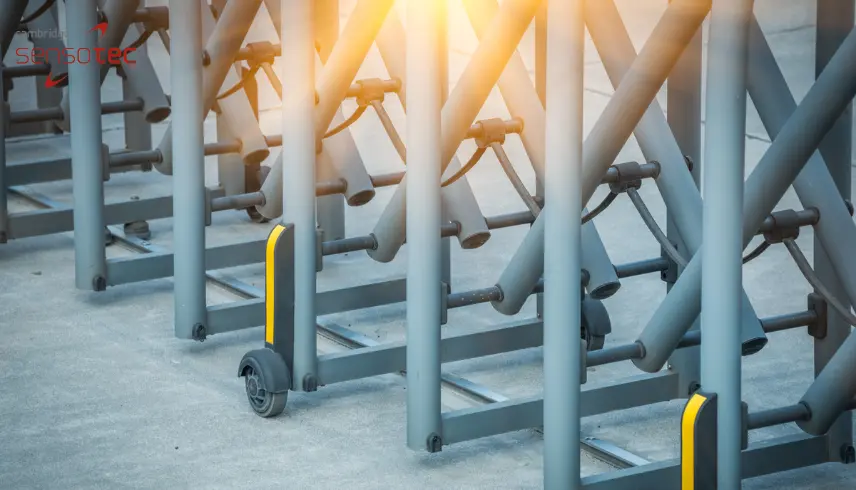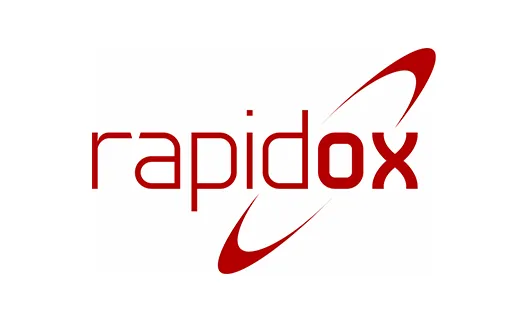
Introduction
Sulfur hexafluoride (SF₆) has long been the industry standard for insulation in high-voltage electrical applications.
Its exceptional insulating properties make it indispensable for gas-insulated switchgear (GIS), circuit breakers, and transformers. However, SF₆ is also one of the most potent greenhouse gases, contributing significantly to climate change due to its high global warming potential and long atmospheric lifespan.
As regulatory bodies impose stricter controls and industries shift toward sustainability, there is a growing need for SF₆ alternatives. One such breakthrough technology is DryAir, an eco-friendly insulation solution that eliminates the environmental risks associated with SF₆ while maintaining high-performance standards.
This article explores the environmental impact of SF₆, the necessity of transitioning to sustainable alternatives, and how DryAir is paving the way for a greener future in electrical infrastructure.
Understanding SF₆ and Its Industrial Importance
What is SF₆?
Sulfur hexafluoride (SF₆) is a synthetic gas widely used in the power industry due to its excellent dielectric strength and ability to quench electrical arcs. It is chemically stable, non-toxic, and non-flammable, making it ideal for insulating and protecting high-voltage electrical equipment.
SF₆ is used primarily in:
- Gas-insulated switchgear (GIS) for power transmission and distribution
- High-voltage circuit breakers and transformers
- Medical applications such as MRI scans and respiratory diagnostics
- Semiconductor manufacturing as a plasma etching gas
While SF₆ has provided reliable insulation for decades, its environmental impact has become a major concern, prompting the industry to seek alternatives.
Why is SF₆ a Concern?
Despite its benefits, SF₆ is a significant contributor to climate change due to its extreme global warming potential (GWP). Over a 100-year period, SF₆ has a GWP of approximately 23,500 times that of carbon dioxide (CO₂), making it one of the most potent greenhouse gases known.
Additionally, SF₆ has an atmospheric lifespan of over 3,200 years, meaning that once released, it remains in the atmosphere for millennia. This longevity ensures that every leak or accidental release has long-term environmental consequences.
The Environmental Impact of SF₆
Global Warming Potential and Greenhouse Gas Emissions
SF₆’s high GWP means that even small leaks can have a disproportionately large impact on climate change. While it only accounts for a small fraction of total greenhouse gas emissions by volume, its effect on global warming is immense due to its long lifespan and powerful heat-trapping capabilities.
Leakage and Emission Risks
SF₆ leaks occur through:
- Equipment installation and maintenance
- Aging electrical infrastructure
- Improper disposal and recycling of SF₆-filled equipment
Without stringent containment measures, SF₆ emissions can accumulate over time, exacerbating climate change and increasing the need for more sustainable insulation alternatives.
Regulatory and Compliance Challenges
Governments and environmental organizations worldwide are imposing strict regulations to curb SF₆ emissions. Some of the most significant regulations include:
- The EU F-Gas Regulation, which sets phased reductions and reporting requirements for SF₆ users
- The Kyoto Protocol, identifying SF₆ as a greenhouse gas requiring reduction strategies
- The Paris Agreement, which aims to limit global temperature increases by reducing industrial emissions
These policies are pushing the electrical industry to transition to alternative insulation solutions that minimize environmental impact.
The Need for SF₆-Free Switchgear Technologies
Climate Change and Sustainability Goals
With industries striving to meet sustainability targets, reducing SF₆ emissions is a critical step in combating climate change. Companies and governments are prioritizing investments in SF₆-free switchgear to align with international agreements such as the EU Green Deal and the Global Methane Pledge.
The Shift Towards Sustainable Technology
The power industry is undergoing a significant transformation, with leading manufacturers developing and adopting SF₆-free alternatives. Technologies such as DryAir, vacuum circuit breakers, and solid dielectric insulation are gaining traction as viable replacements for SF₆-based systems.
Financial and Compliance Incentives
Although the transition away from SF₆ requires initial investment, the long-term benefits far outweigh the costs. Companies adopting SF₆-free technologies benefit from:
- Reduced regulatory compliance risks
- Lower maintenance and operational costs
- Enhanced sustainability credentials, which attract eco-conscious stakeholders and customers
Governments are also offering financial incentives and subsidies to encourage businesses to switch to environmentally friendly insulation technologies.
Introducing DryAir: A Sustainable Alternative to SF₆
What is DryAir?
DryAir technology is an SF₆-free insulation system that uses pressurised, purified air instead of synthetic greenhouse gases. This alternative provides the same high-level insulation performance as SF₆ without contributing to climate change.
Key Benefits of DryAir Technology
- Zero Greenhouse Gas Emissions – Unlike SF₆, DryAir has no global warming potential, making it a fully sustainable option.
- Safe and Non-Toxic – There is no risk of oxygen displacement, making it safer for workers and maintenance crews.
- Reliable Electrical Insulation – DryAir has been proven to provide the same electrical insulation properties as SF₆ in switchgear and transformers.
- Regulatory Compliance – DryAir aligns with global sustainability initiatives and meets stringent environmental standards.
How DryAir Works
DryAir uses a controlled mixture of dry, compressed air to insulate electrical components. This system eliminates the need for fluorinated gases, significantly reducing the carbon footprint of high-voltage infrastructure.
Comparing SF₆ vs. DryAir
| Feature | SF₆ | DryAir |
| Global Warming Potential | 23,500 GWP | Zero |
| Atmospheric Lifespan | 3,200+ years | None |
| Regulatory Restrictions | Increasingly strict | Fully compliant |
| Electrical Insulation | Excellent | Proven effectiveness |
| Safety Risks | Oxygen displacement, asphyxiation hazard | No safety concerns |
DryAir technology presents a cost-effective, environmentally responsible alternative, helping industries reduce emissions without sacrificing performance.
How DryAir is Transforming the Electrical Industry
The transition to SF₆-free insulation technologies is revolutionizing electrical infrastructure across multiple sectors. As industries strive for sustainability and regulatory compliance, DryAir technology is emerging as a leading solution to reduce greenhouse gas emissions while maintaining high-performance insulation. Its widespread adoption is transforming power transmission, renewable energy, and industrial applications by providing a reliable, environmentally friendly alternative to SF₆.
Power Transmission & Distribution
One of the most significant applications of DryAir is in power transmission and distribution networks. Electrical grids rely on gas-insulated switchgear (GIS), transformers, and circuit breakers to manage high-voltage electricity efficiently and safely. Traditionally, SF₆ has been the preferred insulating gas due to its exceptional dielectric strength. However, with increasing environmental regulations and sustainability targets, utilities and energy providers are now turning to DryAir as a viable alternative.
Key Benefits of DryAir in Power Transmission
- Zero Greenhouse Gas Emissions – Unlike SF₆, DryAir does not contribute to climate change, making it a sustainable choice for future grid expansions.
- Long-Term Cost Savings – Regulatory compliance and carbon taxes on SF₆ emissions are becoming more expensive, making DryAir a cost-effective investment.
- Improved Safety – DryAir eliminates the risk of oxygen displacement and toxic byproducts, ensuring safer maintenance and operation for power engineers.
- Operational Reliability – DryAir provides comparable insulation performance to SF₆, ensuring grid stability and efficient power distribution.
Several major utilities and grid operators have already begun pilot projects to integrate DryAir-based switchgear into their networks. The shift towards SF₆-free solutions is also aligning with smart grid initiatives, enabling digital monitoring and predictive maintenance strategies for next-generation power systems.
Renewable Energy Infrastructure
As global energy demand shifts towards renewables such as wind and solar power, there is a growing need for sustainable grid infrastructure that supports clean energy without relying on high-GWP gases like
SF₆. DryAir is playing a crucial role in this transformation, providing an eco-friendly insulation solution for renewable energy facilities.
Why DryAir is Ideal for Renewable Energy Applications
- Reduces Carbon Footprint – SF₆-free switchgear and transformers prevent the release of harmful emissions, supporting the carbon-neutral goals of wind and solar farms.
- Improves Grid Integration – Renewable energy sources require advanced electrical infrastructure to handle variable power loads, and DryAir ensures reliable operation in these challenging conditions.
- Enhances Offshore Wind Farm Safety – Many wind farms are installed offshore, where leak detection and gas recovery of SF₆ are highly challenging. DryAir eliminates these concerns by providing a sustainable alternative that requires less maintenance.
- Meets Global Sustainability Commitments – As governments and corporations commit to net-zero emissions, DryAir adoption helps renewable energy companies comply with environmental standards such as the EU Green Deal and the Paris Agreement.
With the rapid expansion of wind and solar energy projects, switching to SF₆-free switchgear ensures that green power is truly sustainable from generation to distribution.
Industrial and Commercial Applications
Beyond the power industry, DryAir is becoming the preferred insulation solution for large-scale industrial and commercial facilities that require reliable, environmentally responsible electrical infrastructure.
From data centers to advanced manufacturing plants, businesses are integrating SF₆-free solutions to reduce their environmental footprint while maintaining operational efficiency.
Industries Benefiting from DryAir Technology
- Data Centers & IT Infrastructure – Large data centers rely on continuous uninterruptible power supply (UPS) systems and high-voltage switchgear. By replacing SF₆ with DryAir, tech companies can significantly reduce their environmental impact and align with sustainability goals.
- Semiconductor & Electronics Manufacturing – The semiconductor industry uses SF₆ for both insulation and plasma etching in chip production. By transitioning to DryAir-based GIS, companies can improve sustainability while ensuring precise energy management.
- Heavy Industry & Manufacturing – High-power industrial equipment, such as arc furnaces, metal processing plants, and chemical production facilities, depend on gas-insulated electrical switchgear. DryAir provides a cost-effective alternative without compromising performance.
- Healthcare & Medical Facilities – Hospitals, pharmaceutical plants, and medical imaging centers require high-reliability power distribution. SF₆-free switchgear using DryAir enhances safety while supporting environmentally responsible healthcare operations.
Advantages of DryAir in Industrial & Commercial Sectors
Regulatory Compliance – Meets stringent emissions reduction targets and aligns with corporate environmental, social, and governance (ESG) initiatives.
Cost Savings – Eliminates SF₆-related taxes, leak detection costs, and maintenance expenses associated with traditional gas-insulated systems.
Future-Proof Technology – As SF₆ phase-out regulations tighten worldwide, adopting DryAir ensures business continuity and avoids supply chain disruptions.
Why Choose Cambridge Sensotec for SF₆ Free Solutions?
At Cambridge Sensotec, we are at the forefront of sustainable gas-insulated solutions. We specialise in:
- SF₆ Leak Detection & Recovery – Helping businesses minimize emissions and ensure regulatory compliance.
- Advanced Gas Analysis Equipment – Enabling precise monitoring of SF₆ levels and alternative gas performance.
- Consulting for SF₆-Free Transition – Assisting businesses in adopting DryAir and other eco-friendly insulation systems.
By working with SF₆.co.uk, companies can transition to cleaner, future-proofed switchgear solutions while maintaining high operational efficiency.
Conclusion: The Future of SF₆ – Free Insulation
The transition to SF₆-free technology is a necessary step in achieving a greener, more sustainable electrical industry. SF₆, while highly effective as an insulator, poses severe environmental challenges due to its extreme GWP and long atmospheric lifespan.
DryAir provides a viable, sustainable alternative, offering zero emissions, regulatory compliance, and reliable performance.
For businesses looking to transition away from SF₆, Cambridge Sensotec provides the expertise, technology, and industry-leading solutions needed to adopt clean, efficient, and future-proof insulation systems.
To learn more about DryAir and how it can benefit your business, contact our team today.

